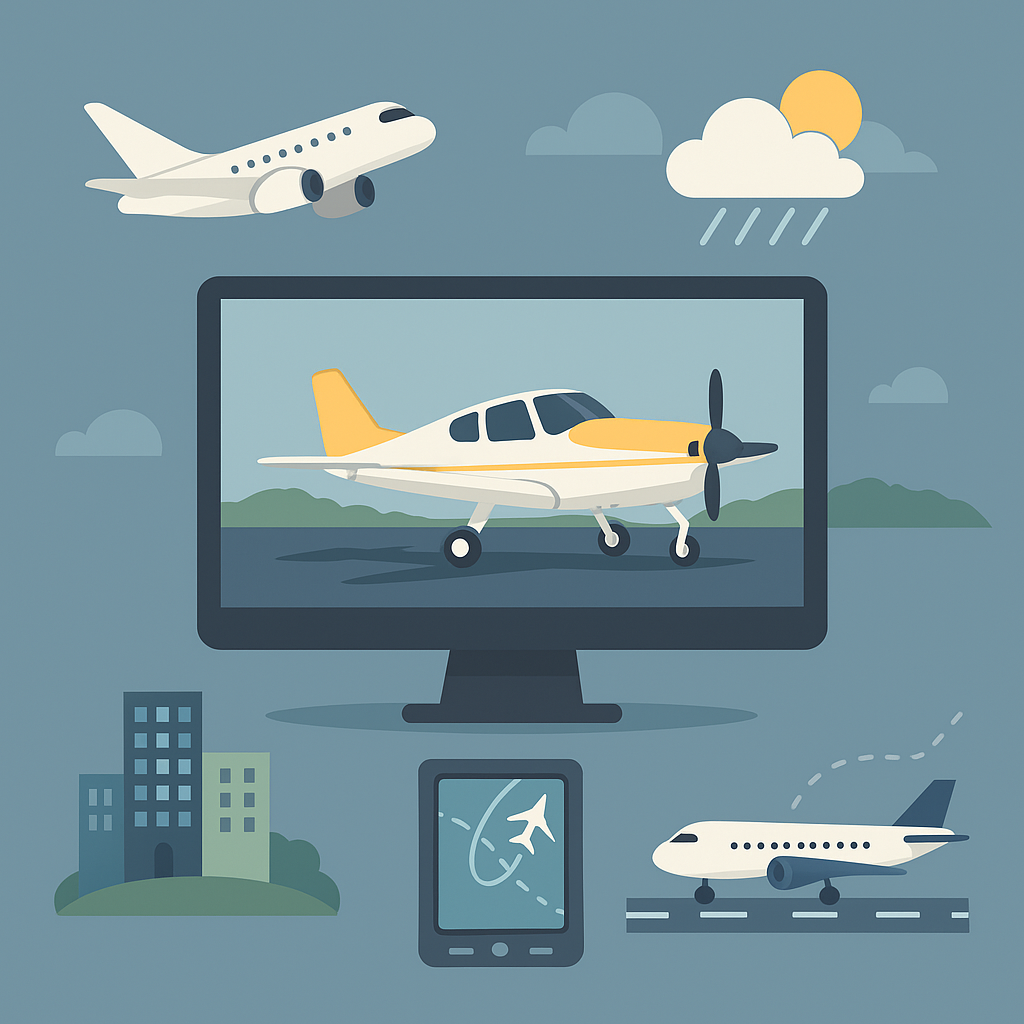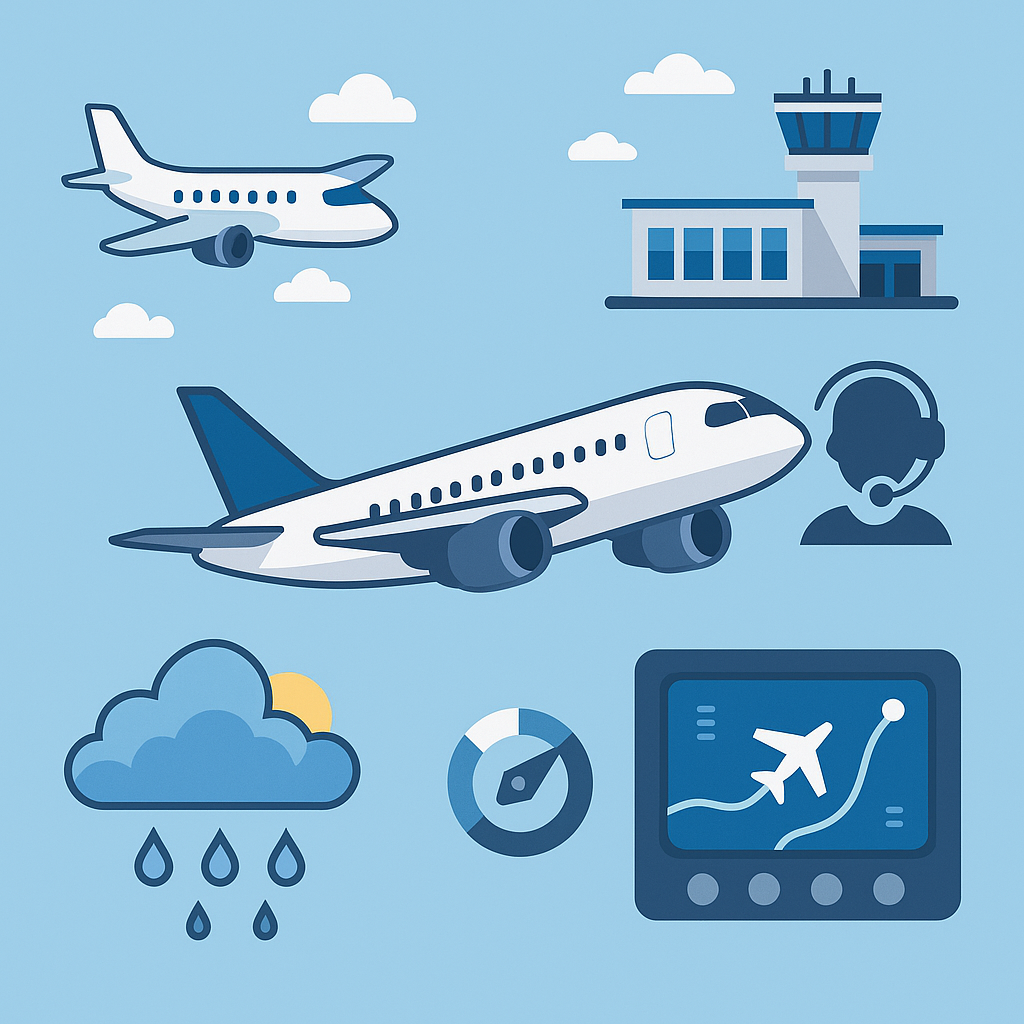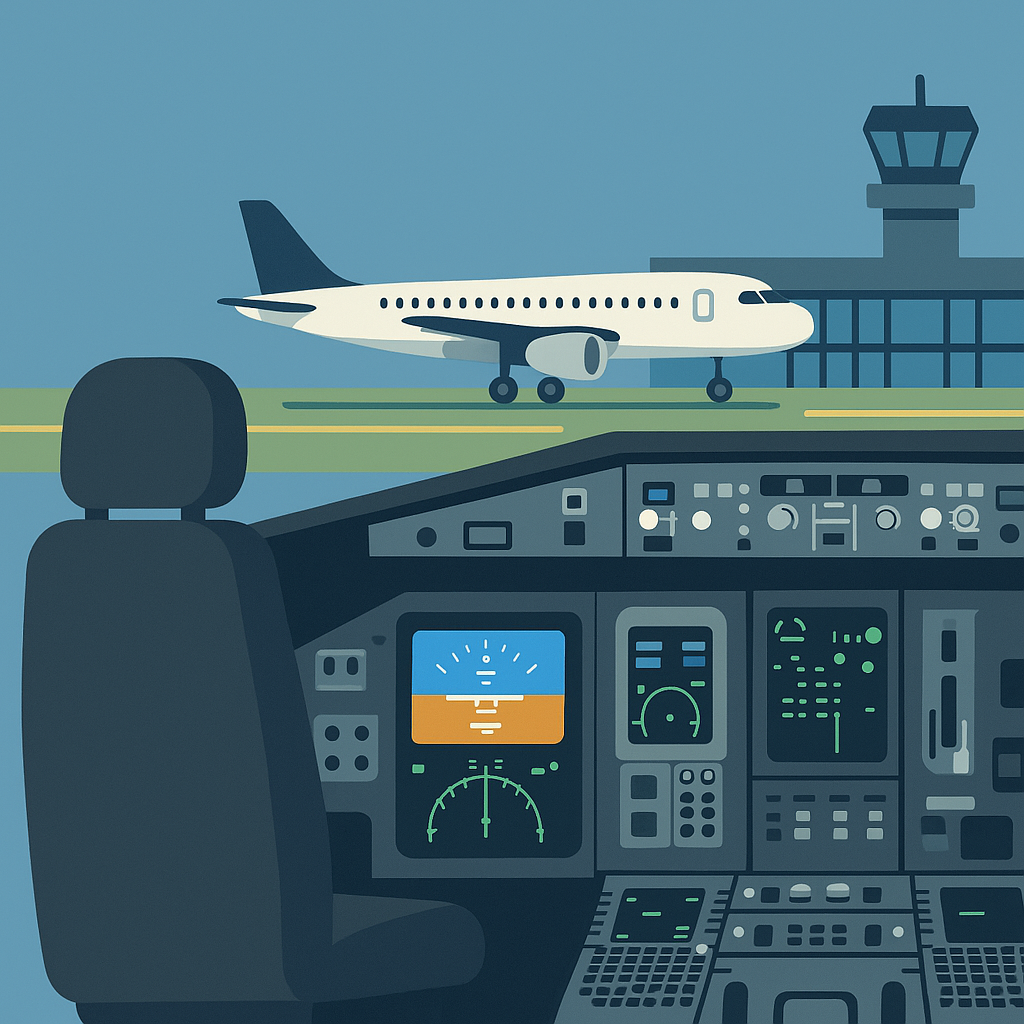Last updated on June 14th, 2025 at 09:34 pm

Add-ons are the secret sauce that make flight sim truly come alive. Picture this: soaring through lifelike clouds, landing on runways so detailed you can almost feel the wheels hit the tarmac, and using navigation tools trusted by real pilots. That’s the kind of magic add-ons bring to the table.
So, what exactly are these add-ons everyone keeps talking about? In short, they’re third-party tools designed to upgrade your base simulator. Whether you’re flying in Microsoft Flight Simulator, X-Plane, or Prepar3D, there’s likely an add-on to enhance everything from visuals and flight dynamics to cockpit systems and even real-time weather.
You might be wondering — are these extras really worth it? Absolutely. Add-ons take your sim from “pretty good” to “wow, this feels real.” They fill in the gaps left by the default settings and let you personalize your experience to match the complexity and thrill of real-world flying. Visuals become breathtaking, flight dynamics mimic reality with precision, and air traffic behaves as it should. For even more realism, many simmers pair their software enhancements with essential hardware upgrades.
Let’s step back a bit and see how add-ons have evolved. Originally, flight simulators were pretty straightforward, offering basic flying experiences. But as technology buzzed forward, enthusiasts and developers got their hands dirty. They cranked out add-ons that transformed these basic simulators into detailed, engrossing worlds that more closely mirror actual flight conditions. Some even take it a step further with custom setups like building a DIY home cockpit to fully personalize the experience.
That’s the lowdown on what add-ons bring to the simulator table. They’re essential, not just for seasoned virtual pilots seeking more lifelike operations, but even for newbies wanting an immersive first experience. So, consider them your ticket to a more thrilling, credible, and engaging virtual flight journey. If you’re just starting out, be sure to check out our step-by-step guide for getting started with flight simulation.
Diverse World of Add-Ons: Types and Their Unique Value

When it comes to flight sims, the variety of add-ons available is like discovering a treasure chest filled with endless possibilities. Each add-on category is crafted to amp up different facets of your sim. Let’s explore what’s out there.
Aircraft add-ons dive right into a detailed rabbit hole of realism. Think of aircraft from companies like PMDG or Fenix, replicating everything from cockpit systems to the unique hum of airplane engines. These add-ons are perfect for anyone itching for a more immersive flying experience, offering features like custom sound sets, authentic flight dynamics, and detailed checklists.
Scenery add-ons are your ticket to a more visually stunning world. Without these, default sceneries might feel bland and generic. But with quality scenery packs from developers like Orbx and FlyTampa, airports boast custom terminals, landmarks pop with life, and terrain accuracy elevates, making your virtual flight paths vibrant and realistic.
Weather and environment enhancers step in when you crave atmospheric realism. Products like REX and Active Sky push the limits of what’s possible. They offer everything from live weather conditions to visually striking cloud formations. The variety of historical weather patterns and presets means every flight can feel fresh and challenging.
Utility tools simplify your navigating life. With apps like SimBrief and Navigraph, the world of real-world flight planning comes alive with precise route planning, SID/STAR procedures, and up-to-date AIRAC cycles, allowing you to pilot with confidence. These tools are also covered in our overview of essential software for novice pilots.
Lastly, there’s the bustling world of ATC and traffic enhancements. Traffic add-ons like FSLTL work to bring authentic, real-world traffic data into your game. For communication, try Pilot2ATC or leap into the VATSIM world, where real people lend their voices to your sim’s ATC, ensuring your virtual airspace and communication are as lifelike as they can be.
Together, these add-ons form a sophisticated landscape that elevates the standard simulation into something personalized and real. Choosing the right mix transforms a simple flight into an enriched experience spanning every aspect from the visual to the audible, and even the interactive.
Comparing Freeware and Payware Add-Ons
When you’re diving into the world of add-ons, there are two main paths you can wander down—freeware and payware. Each has its own perks and quirks, and choosing between them depends on what you need and how much you’re willing to spend.
Freeware add-ons are like finding a rare gem without a hefty price tag. They’re created by passionate community members who pour their creativity and expertise into making great stuff accessible to everyone. Take the FlyByWire A32NX, for example: a fantastic modification that transforms the default Airbus A320neo into something a little more realistic, and it won’t cost you a dime. Websites like flightsim.to are jam-packed with these offerings, from aircraft liveries to new mods.
But why go payware? It’s all about getting that polished, professional edge. Payware add-ons, developed by dedicated companies, often come with superior detail and consistent updates. Think about heavy-hitters like PMDG or scenery pros like Orbx. While they might take a chunk out of your wallet, they provide a level of reliability and intricacy that’s hard to match. You get dedicated support, regular fixes, and usually a bit of extra polish.
Choosing between freeware and payware boils down to your budget and personal preference. Want to keep costs low while expanding your virtual skies? Dive into the vast array of freeware available. Looking for a premium, fuss-free experience that’s super close to reality? Payware could be your best option.
Whether you’re after freeware’s community spirit and creativity or payware’s high-detail precision and support, both roads lead to unique and fulfilling flights. There’s space for both in your flight deck, and mixing them up can give you the best of both worlds.
Enhancing Authenticity: Leveraging Aircraft and Scenery Add-Ons

Imagine sitting in an aircraft cockpit that mimics the real deal, or flying over landscapes that reflect the world outside your window. That’s where aircraft and scenery add-ons play a critical role. They’re the bridge between a generic flight experience and one that’s heart-poundingly realistic.
Aircraft add-ons are all about precision. Whether you’re simulating the systems of a Boeing 737 or the intricacies of an Airbus A320, these add-ons bring systems realism to the forefront. They craft an immersive experience through detailed cockpit systems, nuanced flight dynamics, and authentic sound sets that even cover the subtle hums and varying engine sounds during different phases of flight.
Scenery add-ons, meanwhile, transform barren, default landscapes into vibrant and lifelike backdrops. Airports get a facelift with realistic terminals, taxiways, and lighting. City skylines pop with recognizable landmarks, and terrain accuracy makes VFR flying not just possible, but more enjoyable. Developers like Orbx and FlyTampa have perfected the art of turning the ordinary into something spectacular.
The impact of these add-ons is significant. For those seeking that study-level experience, aircraft add-ons offer a depth of realism that’s hard to beat. You can perform detailed pre-flight inspections, manage unexpected failures using custom checklists, and enjoy the thrill of flying something that behaves as it should in the real world.
Meanwhile, scenery enhancements envelop you in immersive worlds, enhancing the joy and challenge of flying. Whether you’re swooping through mountains or navigating complex airspace, the enhanced landscape makes every flight an adventure.
Incorporating these add-ons not only boosts realism but also maximizes your enjoyment. Whether you’re into casual flying or serious simming, they make sure each flight is packed with authenticity and thrill.
Navigating the Landscape: Using Navigation Tools, Managing Add-Ons, and Ensuring Compatibility
Picture this: you’ve got the perfect array of add-ons set to enhance every flight. How do you keep it all running smoothly and efficiently? This is where organization and the right tools come into play.
Navigation tools like SimBrief and Navigraph are your go-to allies for flight planning. These tools bring in the level of detail needed for accurate route mapping, from departure to approach. With features like SID/STAR procedures and updated AIRAC cycles, you have everything you need to plan flights that mirror real-world operations. The integration capabilities with various sims and aircraft just add to their indispensability.
Managing your add-ons doesn’t have to be a hassle. With tools like Addon Linker (for MSFS) or X-Organizer (for X-Plane), you can keep your library neat and avoid overloading your sim’s main folder. A bit of organization goes a long way toward a smoother flight experience. Always read the installation guides and back up files pre-installation to dodge potential mishaps.
Compatibility can get a little messy — especially when sim updates clash with your favorite mods. Trust me, we’ve all been there. That’s why it helps to double-check forums and feedback before adding something new to your setup.
Performance-wise, keep an eye on your frame rates, especially when running high-detail add-ons. Not every add-on plays nice together, and your system might struggle under certain loads. Balance is key — regularly updating mods and keeping track of performance impacts ensures a smoother, more reliable flight experience. You can also follow these tips on how to optimize your PC for flight simulator performance.
With careful planning, strategic management, and a toolkit of navigation resources, you can keep your virtual flight experience seamless and enjoyable while getting the very best out of your add-ons.

Add-ons are essential software enhancements that significantly boost the functionality, customization, and overall user experience of various applications—from web browsers and video editors to productivity tools. In my experience, the right add-ons can transform a basic tool into a powerhouse, tailored specifically to your workflow or interests. For instance, browser extensions like ad blockers, password managers, or SEO analyzers can dramatically improve efficiency and security. I believe that understanding and leveraging the right add-ons is no longer optional for power users—it’s a must for anyone aiming to get the most out of their digital tools.
Thanks for your comment! You clearly have a strong grasp of how impactful add-ons can be across different platforms—your examples of browser tools like ad blockers and password managers are spot on. I completely agree that for power users, leveraging the right add-ons is essential.
When I used Flight Simulator X, I also experimented with several add-ons—especially for enhanced scenery and aircraft realism—and it really transformed the experience. It’s amazing how much more immersive and personalized flight simulation becomes when you start customizing it to your liking.
Appreciate your insight!
This post does a fantastic job of breaking down the world of flight simulator add-ons in a clear and engaging way. It’s impressive how it highlights not only the incredible realism these tools offer—from meticulously modeled aircraft systems to breathtaking weather and scenery—but also the practical side, like managing add-ons and ensuring compatibility. I especially appreciated the balanced take on freeware versus payware, making it easier for newcomers to understand their options. The shoutouts to community-driven projects like FlyByWire and essential tools like SimBrief and Navigraph show how collaborative and evolving the sim world really is. For anyone just starting their journey or even seasoned pilots looking to upgrade, this guide is both informative and inspiring. It reminds us that add-ons aren’t just extras—they’re the elements that turn a basic simulator into an unforgettable flying experience.
Thank you so much for taking the time to share your thoughts, Andrejs. I’m really glad you found the article helpful and engaging. You’re absolutely right—add-ons are key to transforming a basic simulator into a rich, immersive flying experience. Tools like FlyByWire, SimBrief, and Navigraph are great examples of how community-driven efforts continue to enhance realism and accessibility.
In addition to those, there are also a wide variety of Microsoft Flight Simulator add-ons available—both free and paid—that can expand everything from aircraft realism to scenery and weather dynamics. It’s great to see how many options are out there for sim enthusiasts at every level.
My dad was a pilot, and I guess I just never got interested enough. I know my mom did the flight simulators at home. LIving in Alaska, where airplane accidents are quite common, it makes sense to get everything you need to be prepared as a pilot. Specifially the weather and environment enhancer add-ons would probably be something I would consider an imporetant add-on. Great information and I agree that having the add-ons takes your flight to the next level and maybe a little more prepared as well.
Thanks so much for your comment, Leahrae! That’s really interesting to hear about your family’s connection to aviation—especially growing up in Alaska, where flying plays such a critical role. You’re absolutely right: weather and environment enhancer add-ons can make a big difference, not just for realism but also for building awareness and preparedness in the simulator. I’m glad you found the information helpful—add-ons truly do elevate the entire flight sim experience!